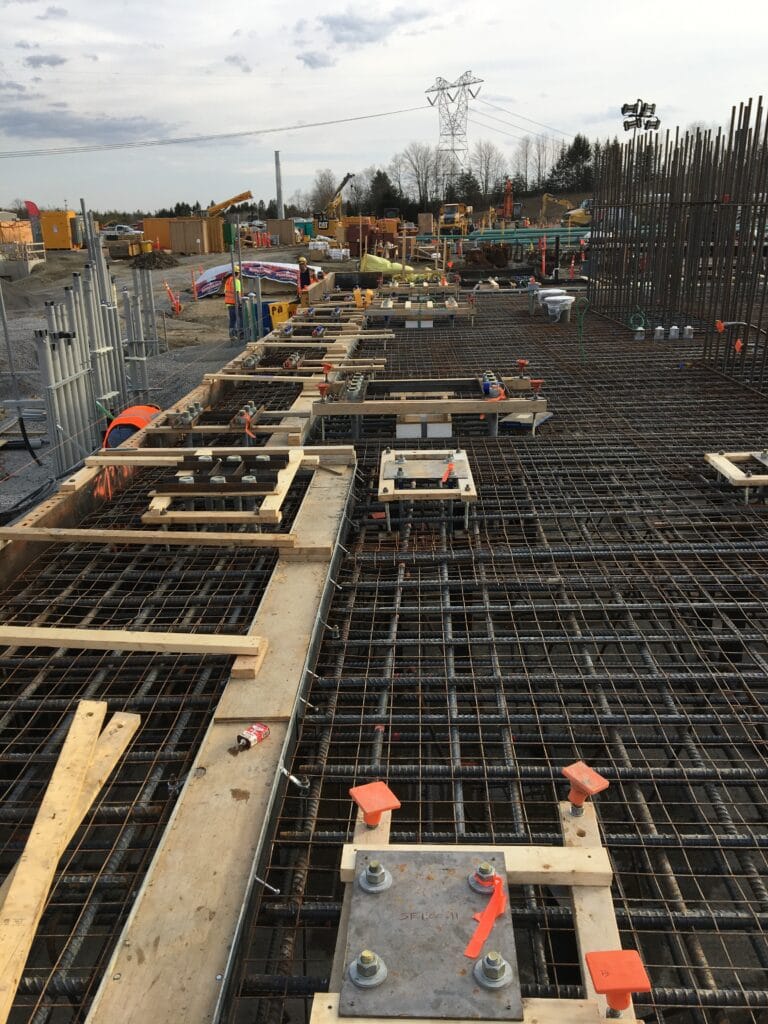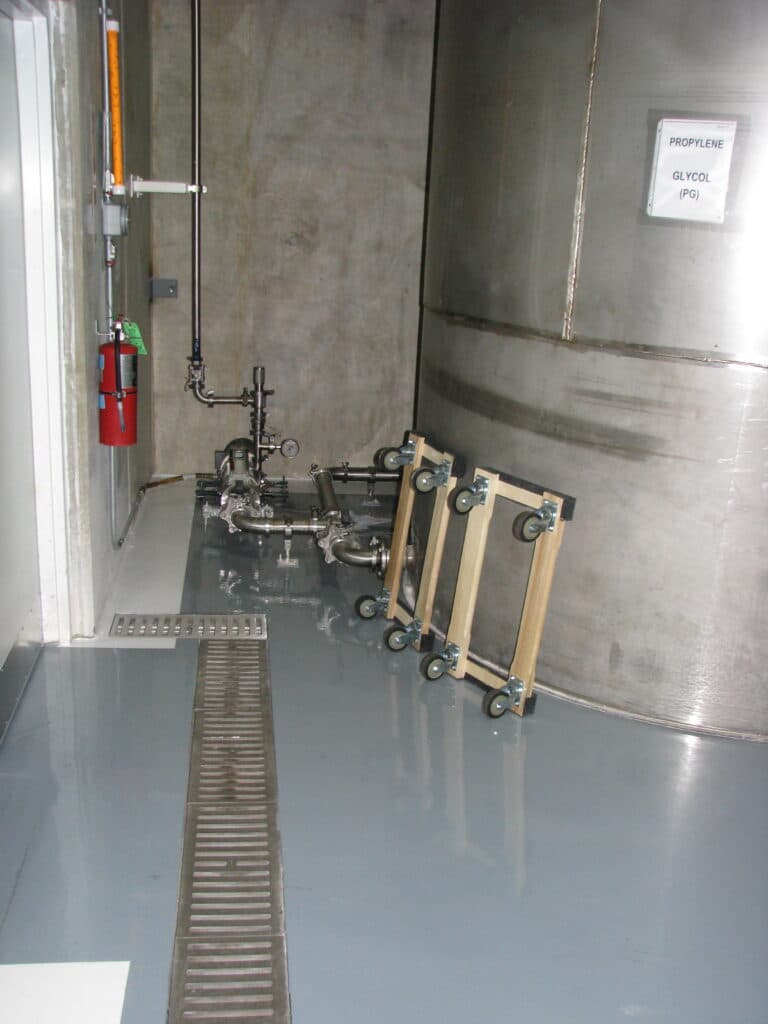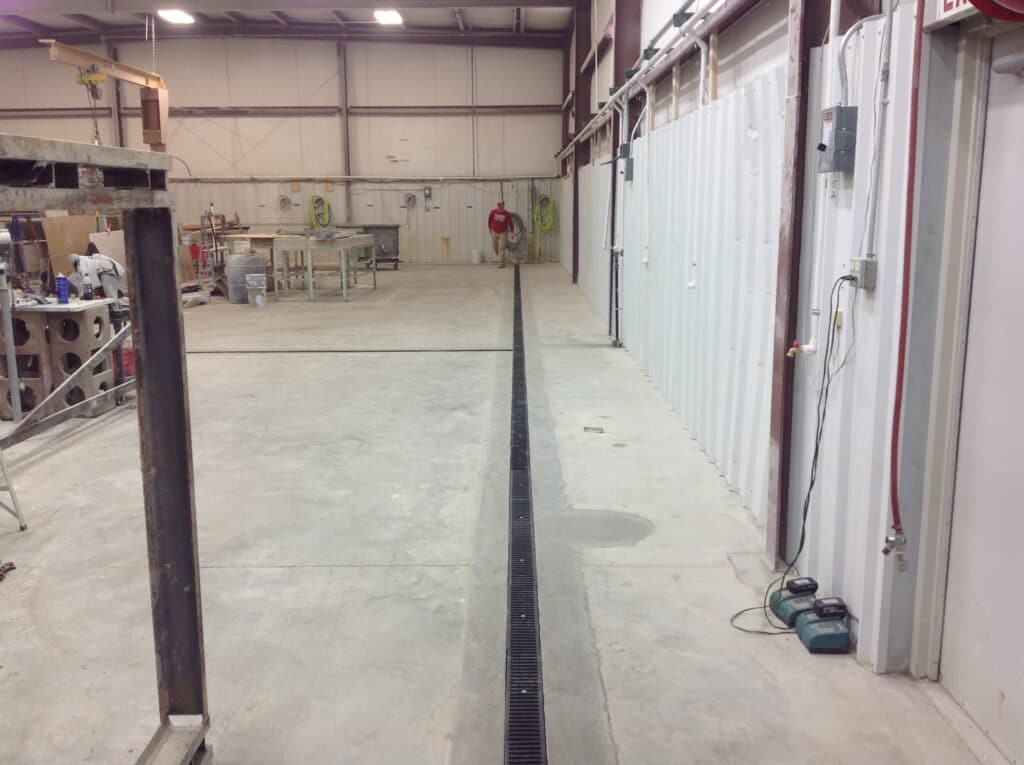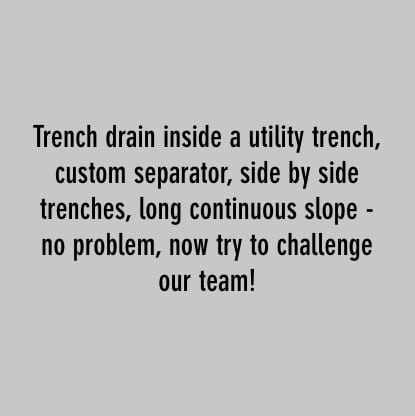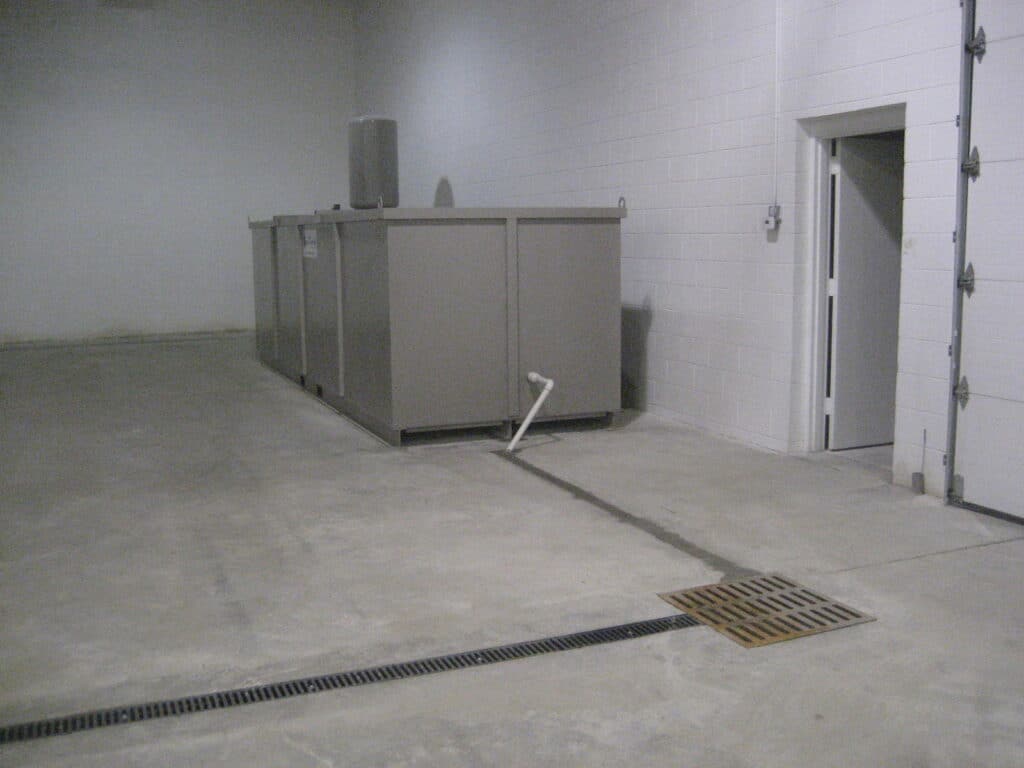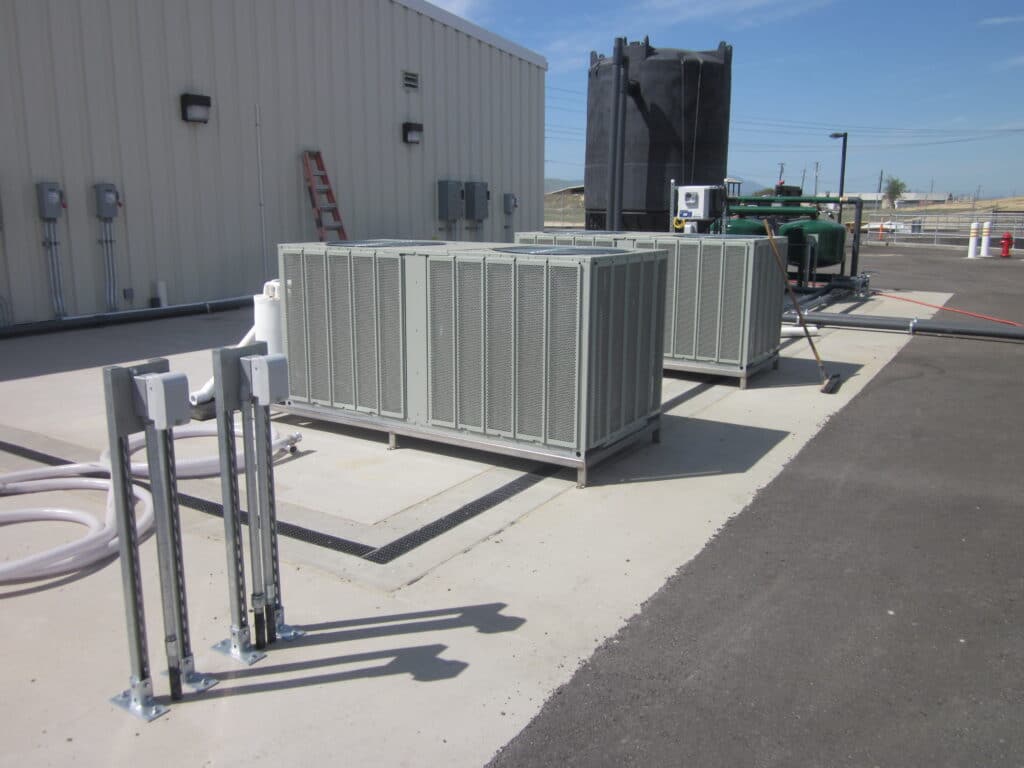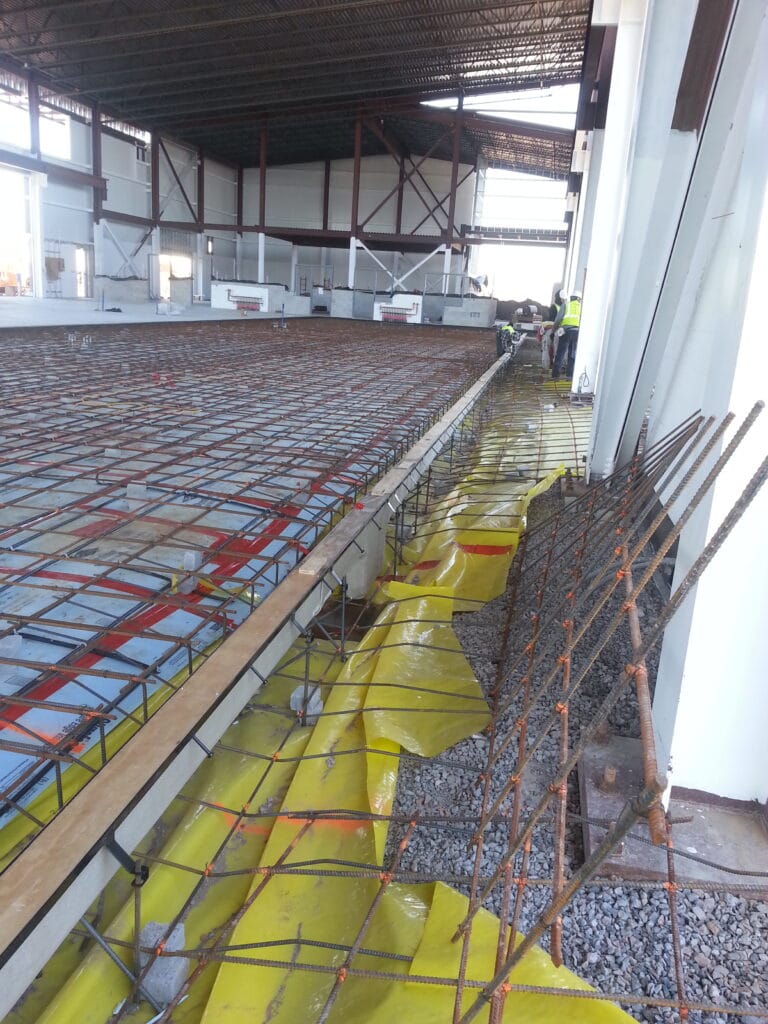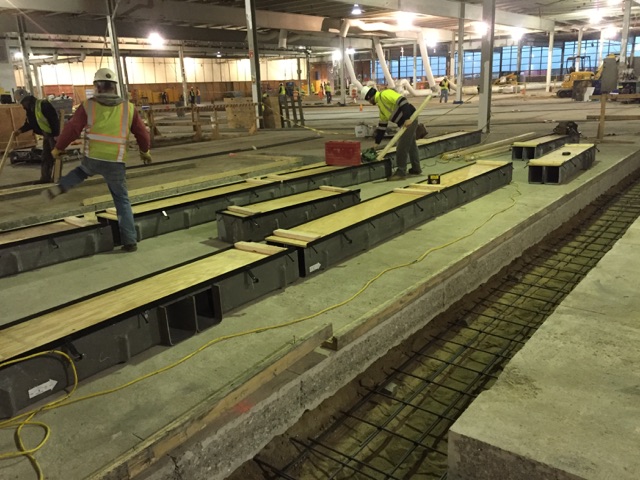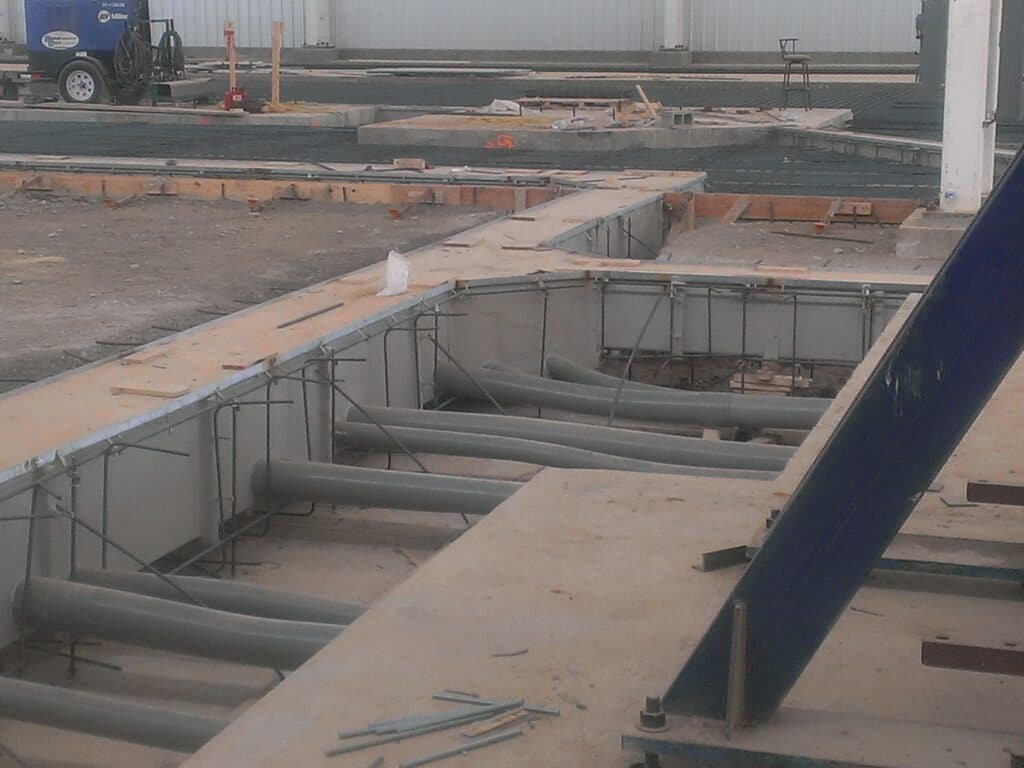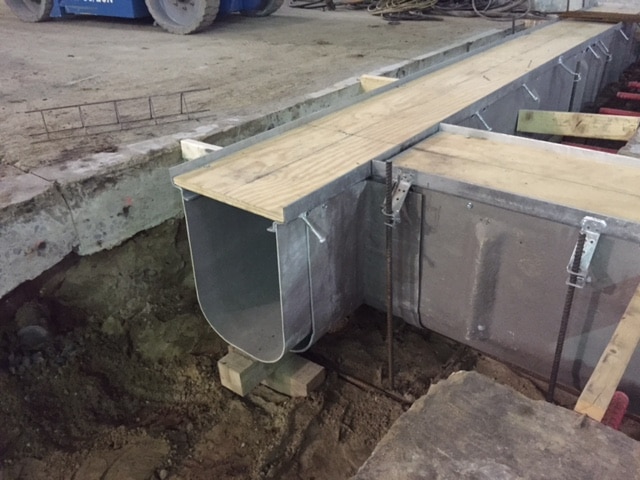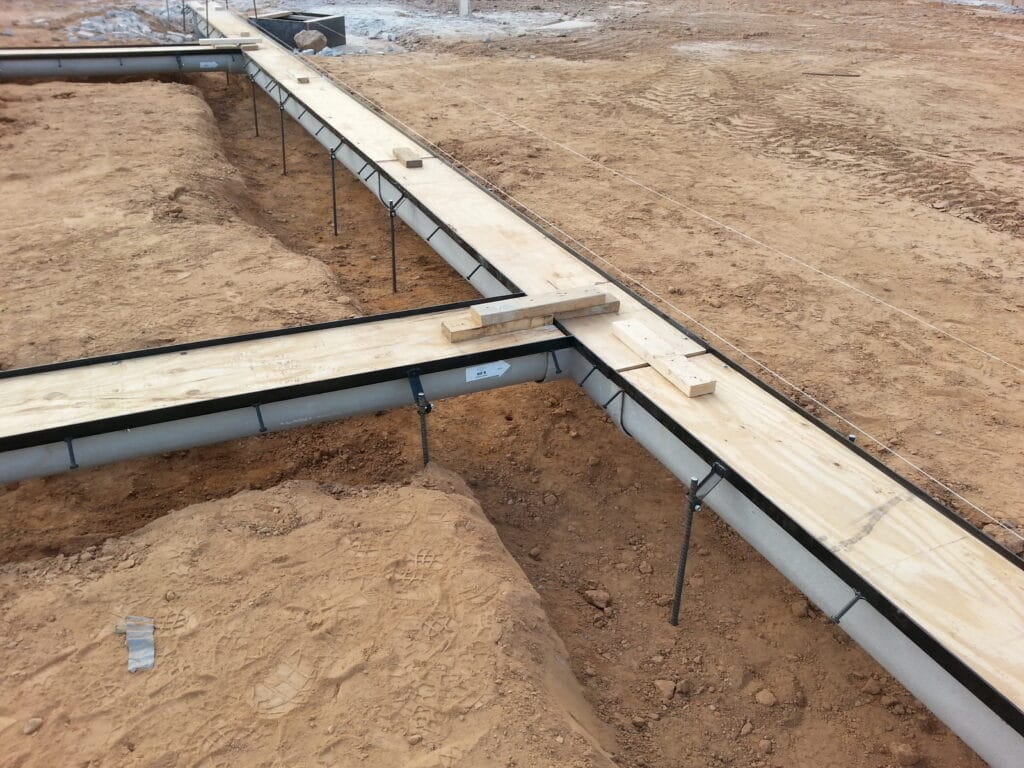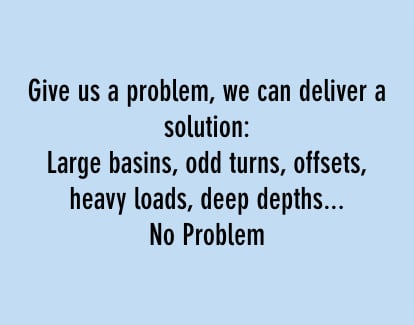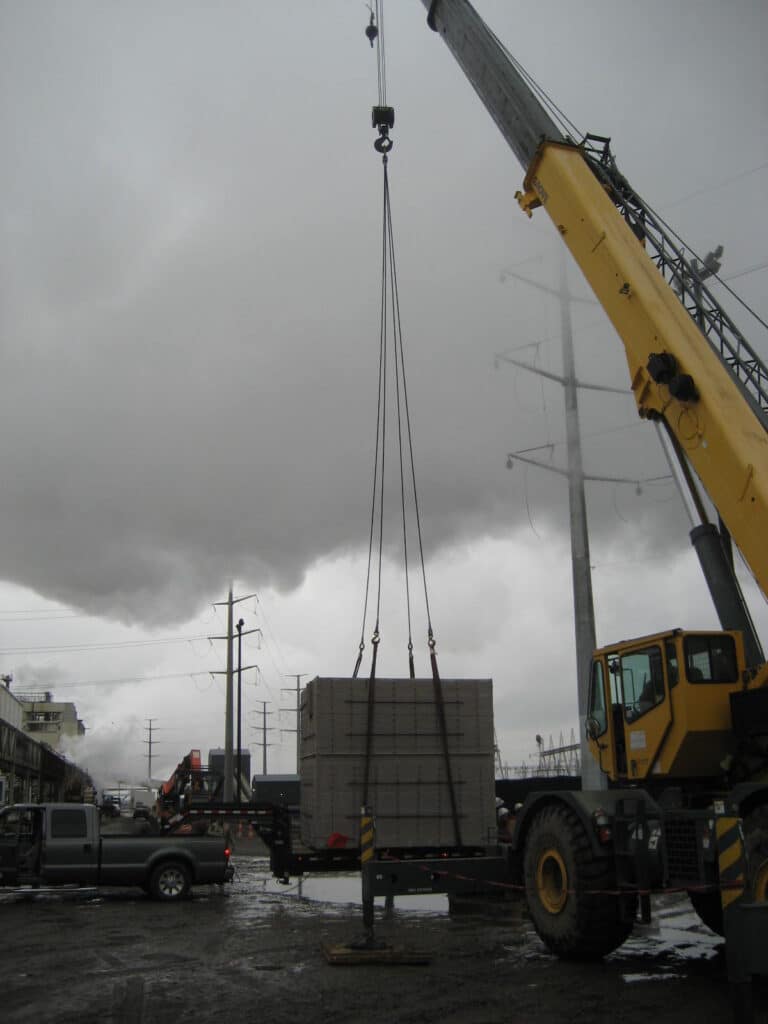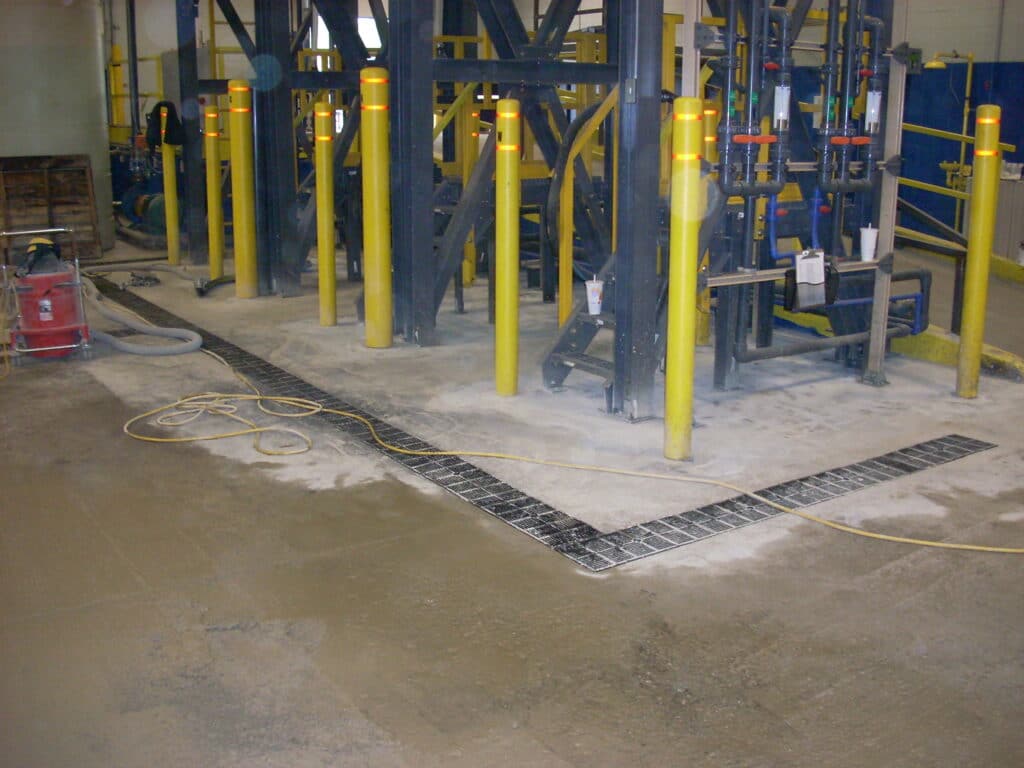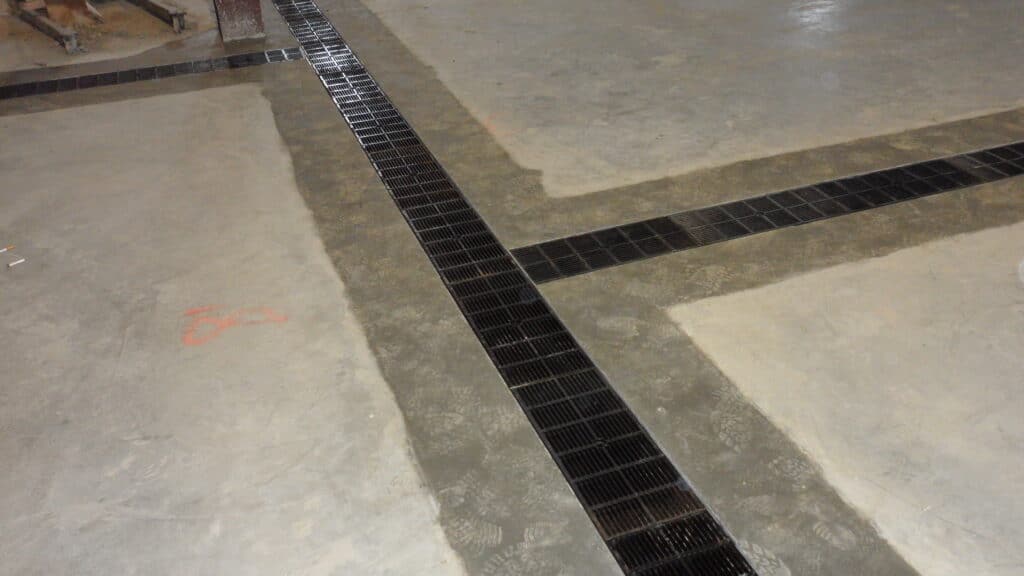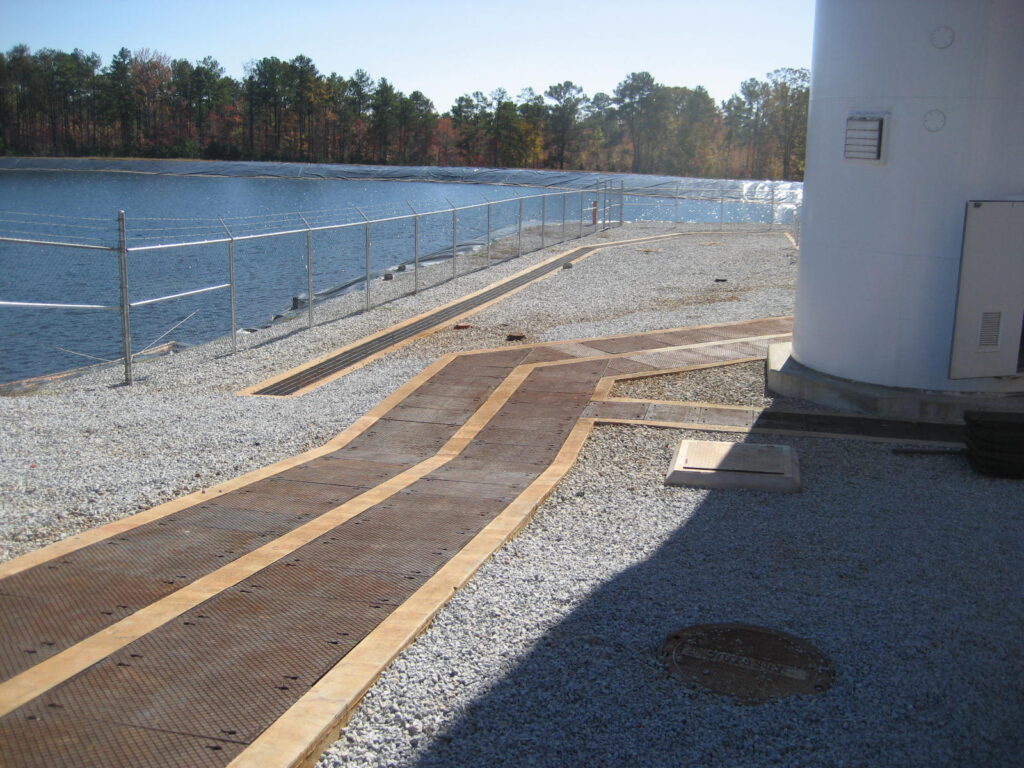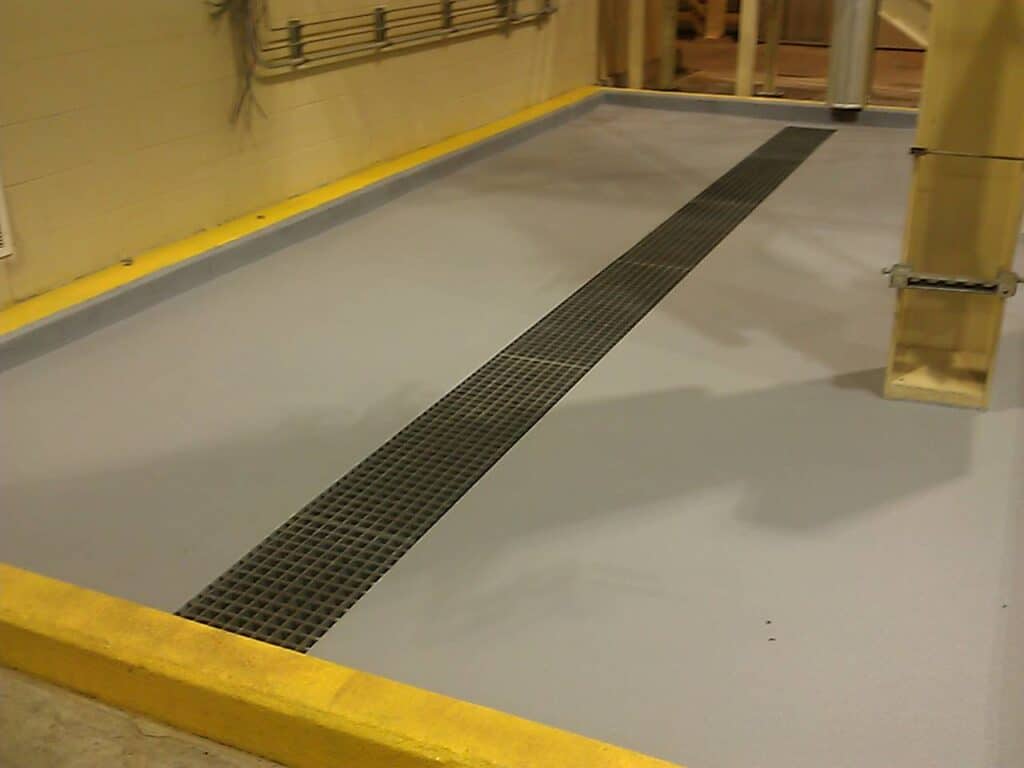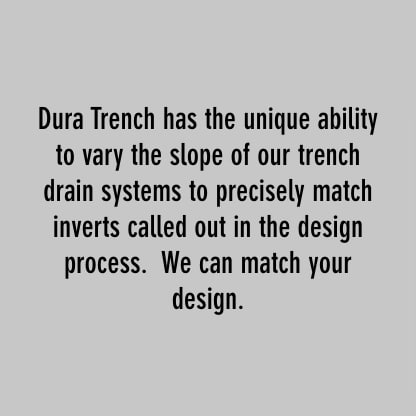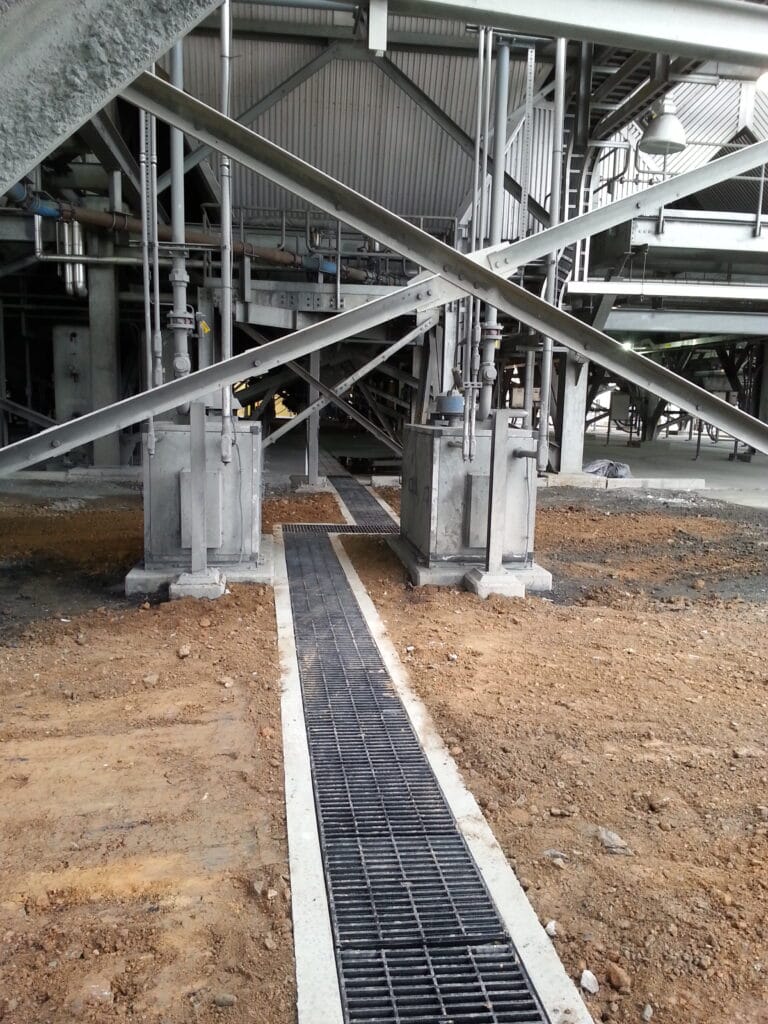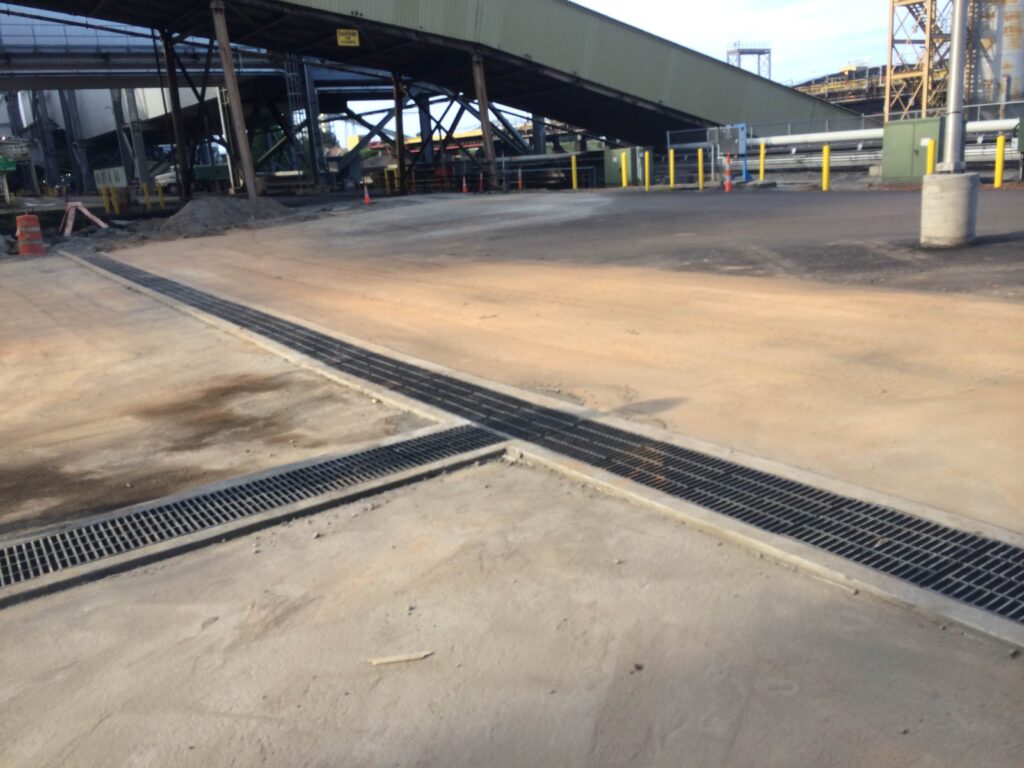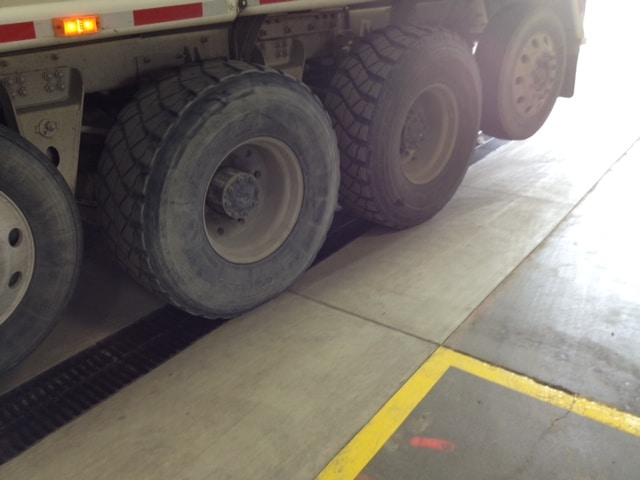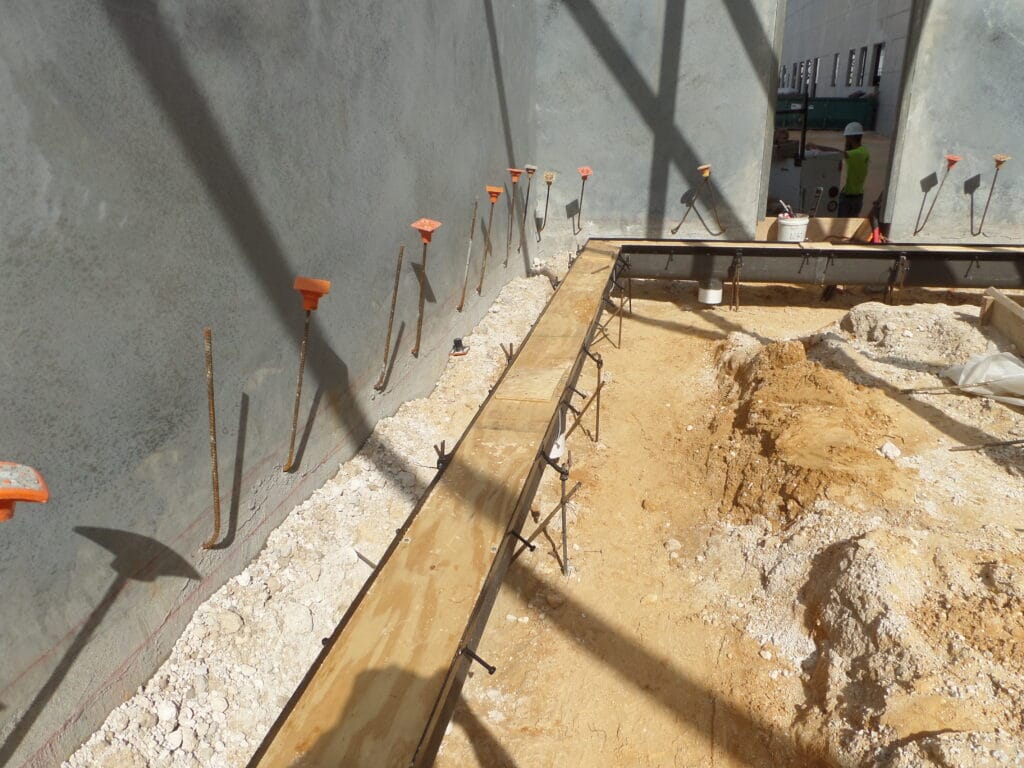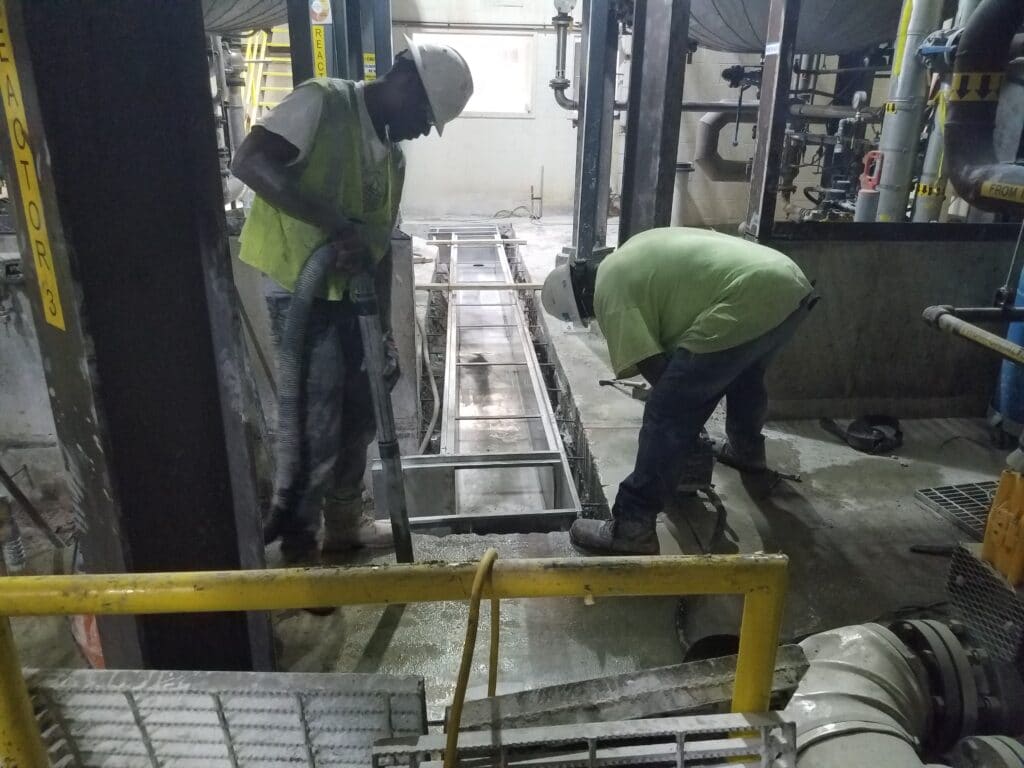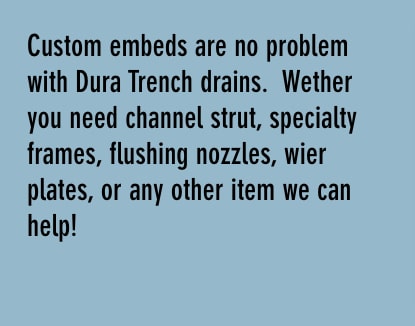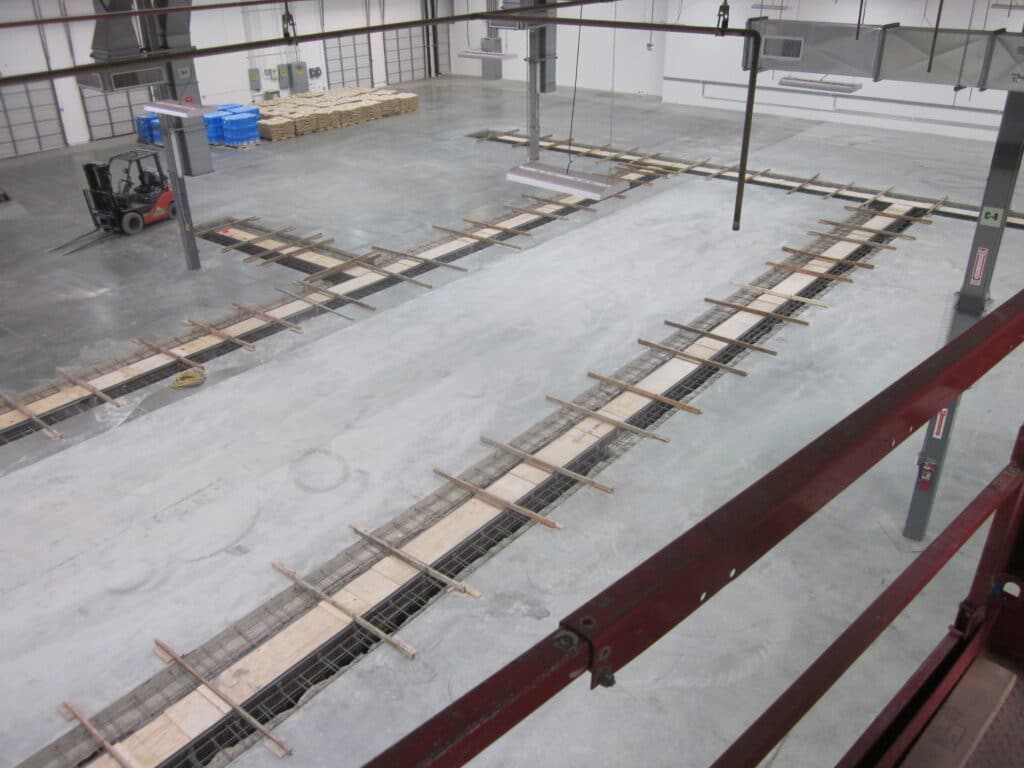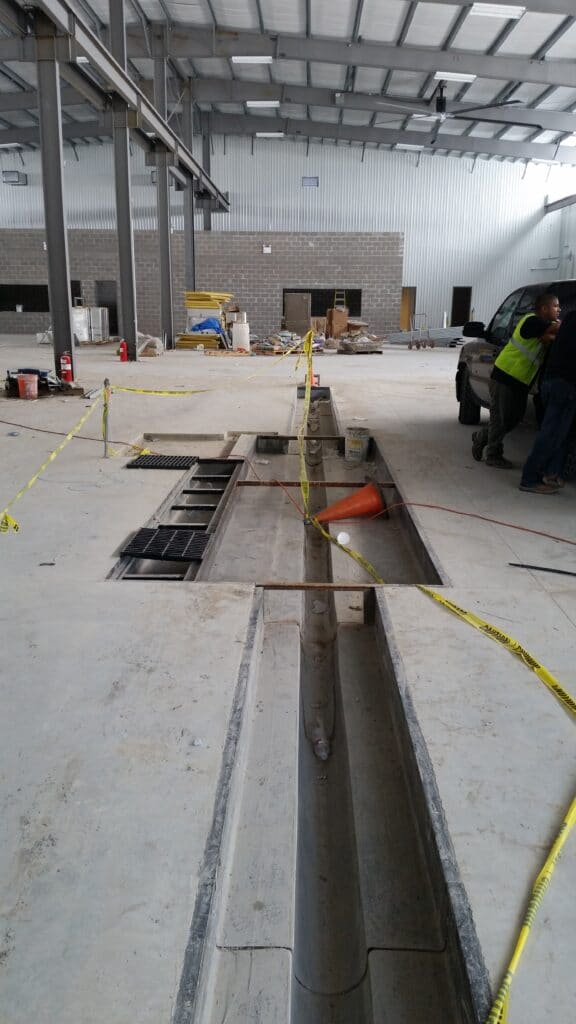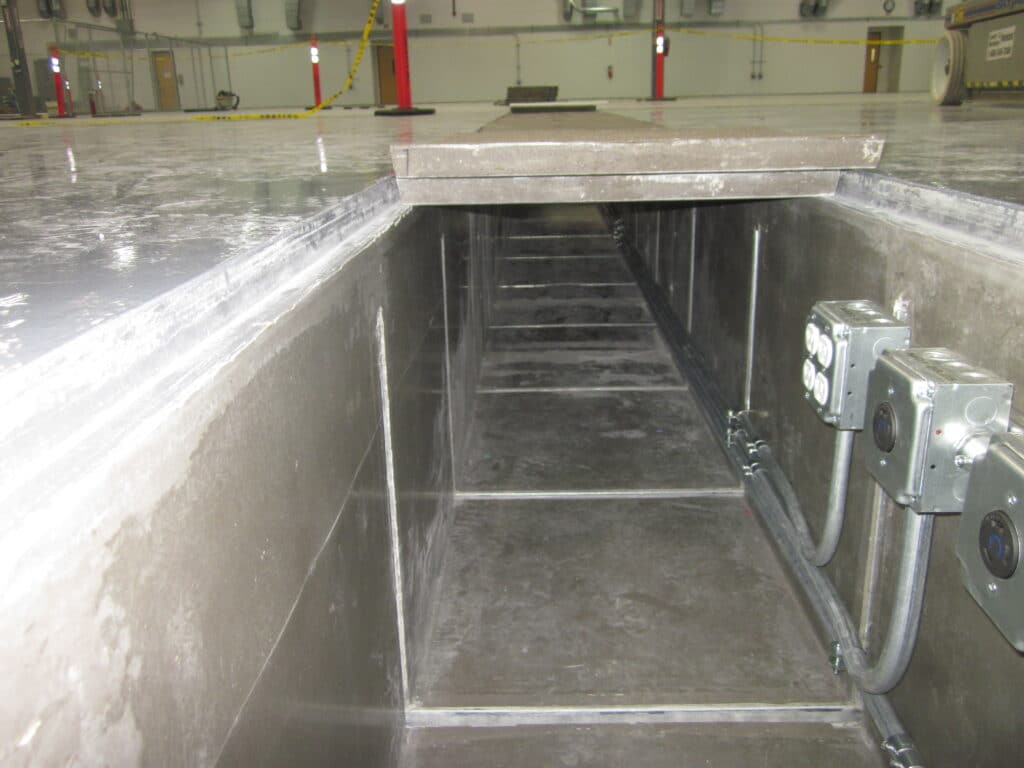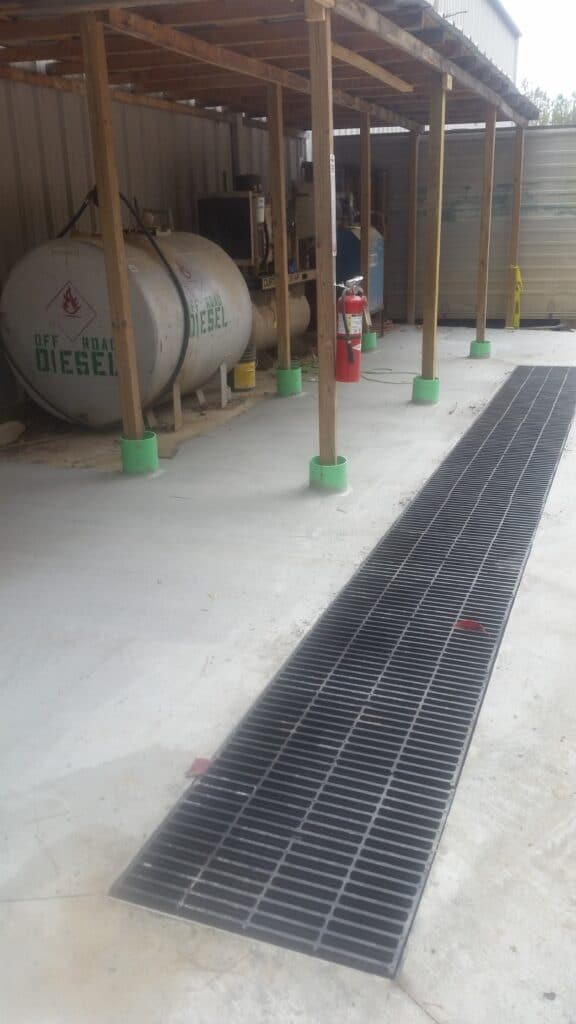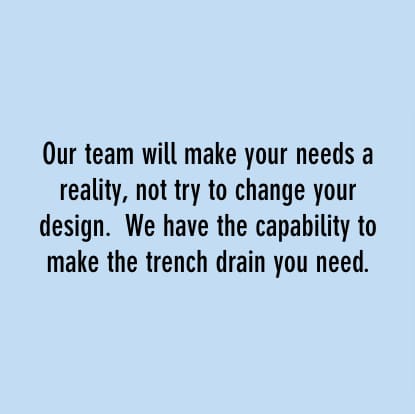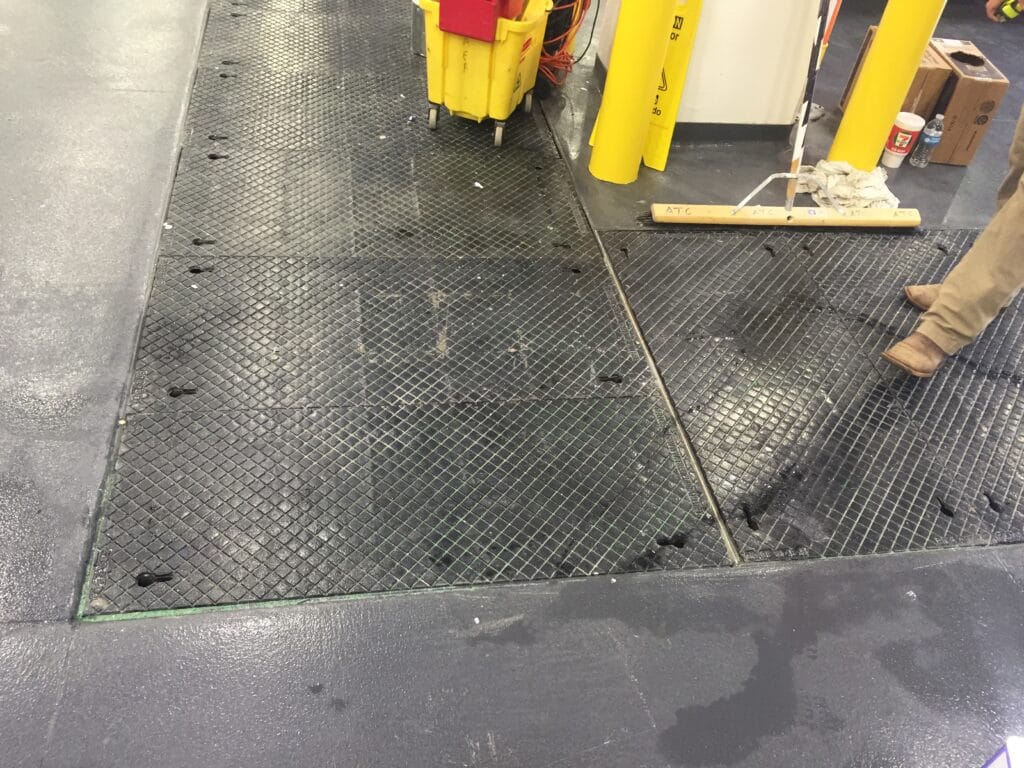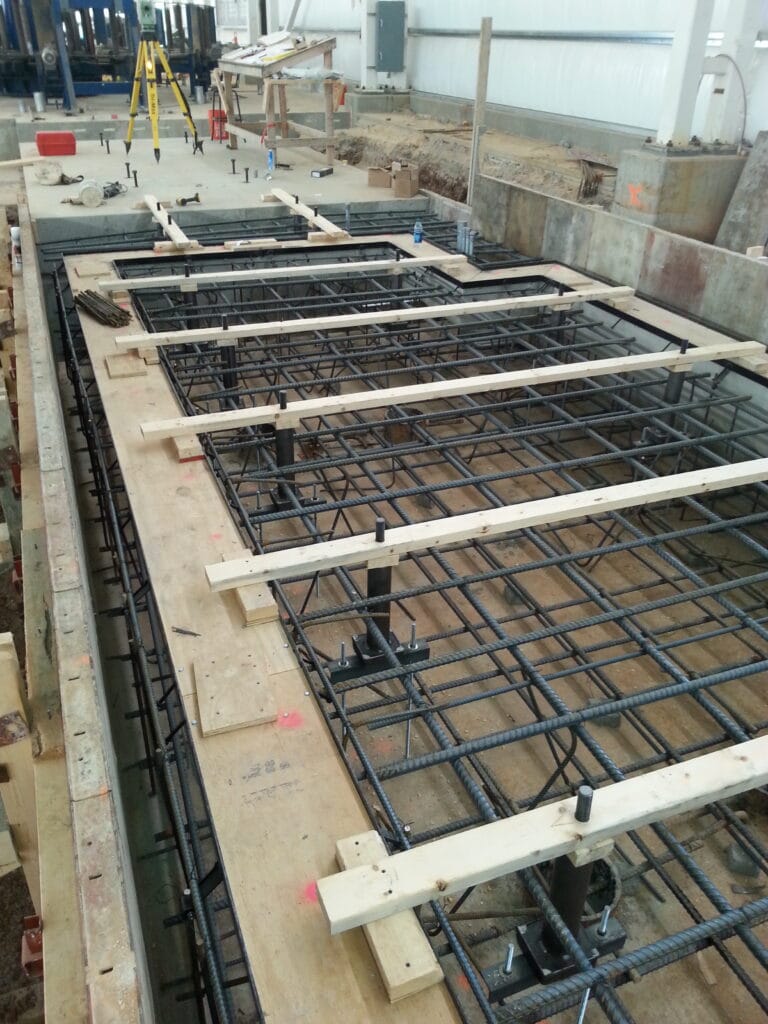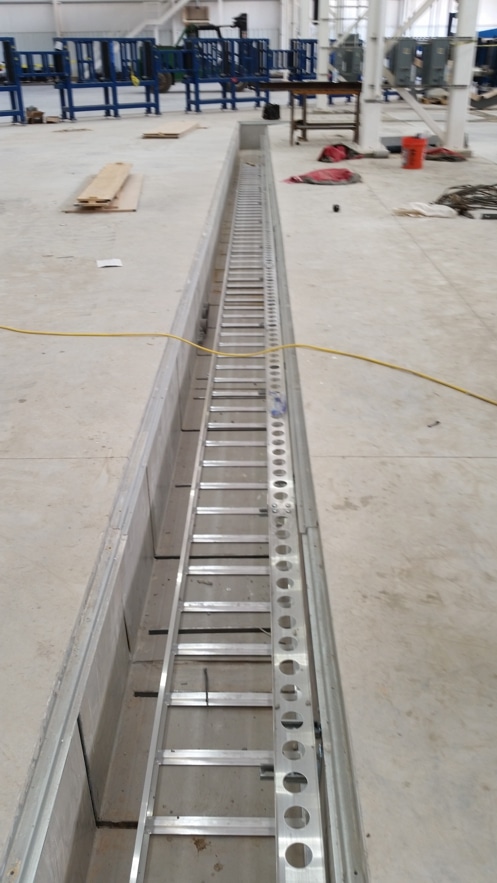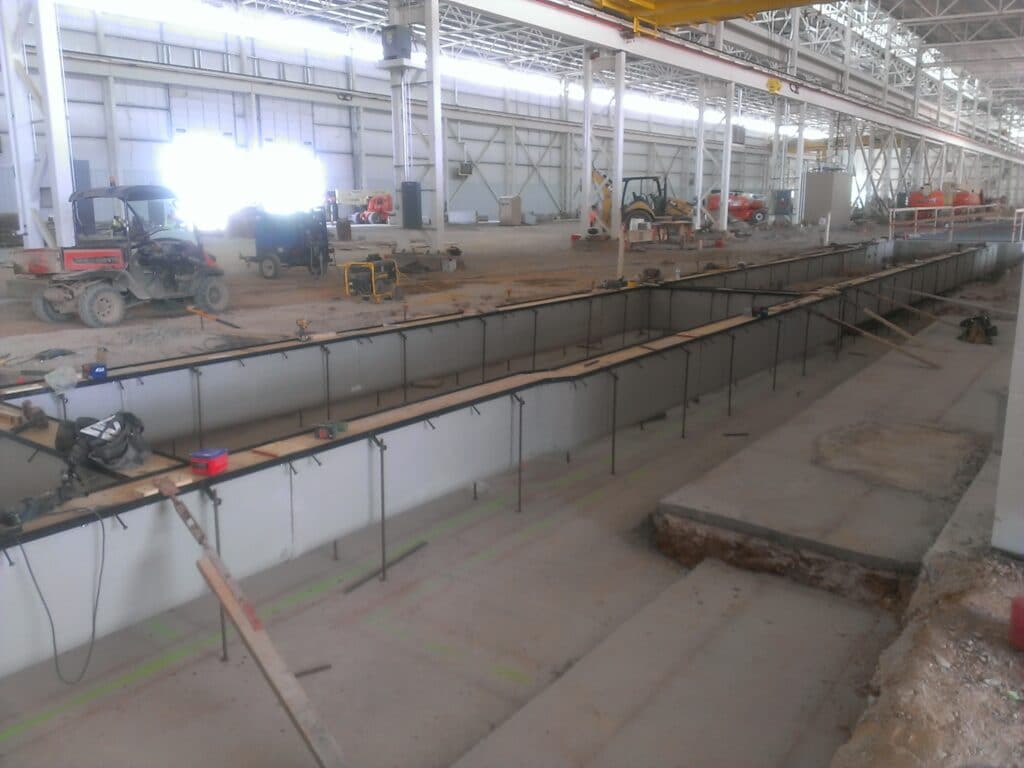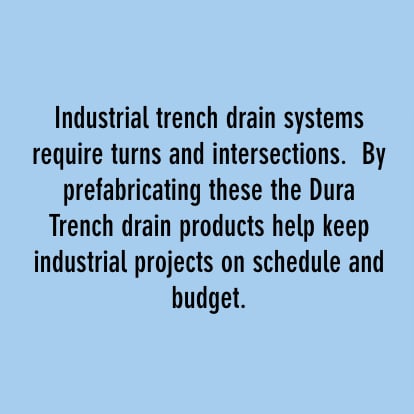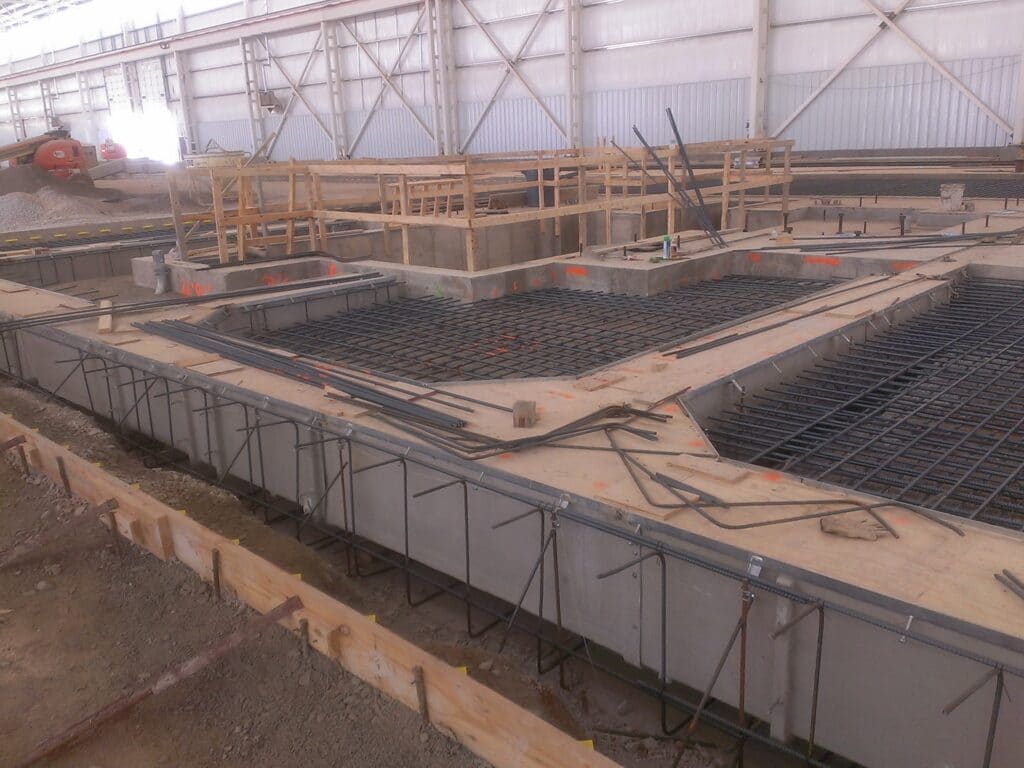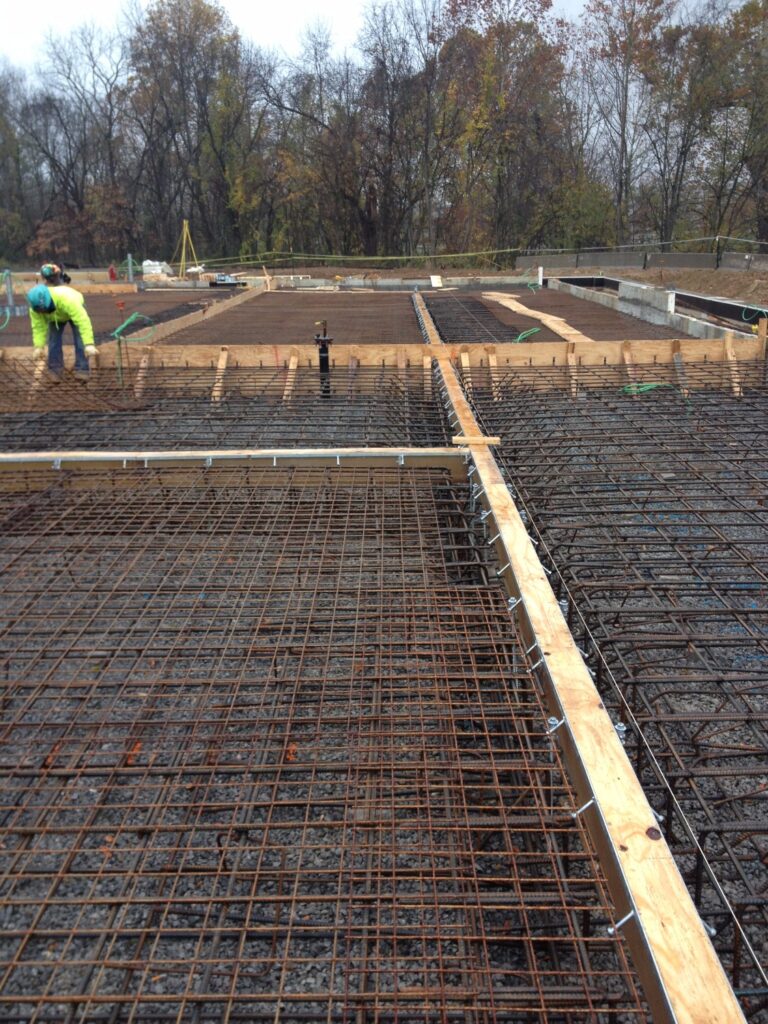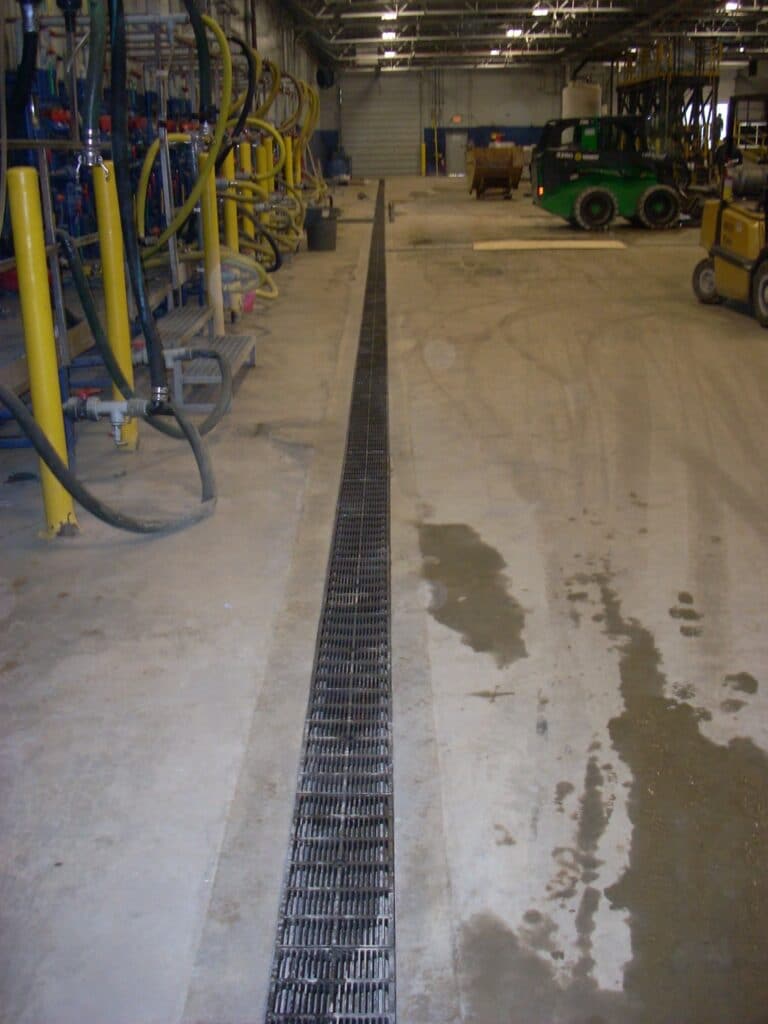Industry is very difficult to categorize and generalize as there are many very specialized processes that have their own needs. Industrial trench drains are used to capture fluids used to cool machinery, capture wash water from washing equipment and products, contain and treat chemicals used in various processes, contain spills, run wires and pipes to machinery, and any number of other uses.
Most industries are tightly regulated and are no longer allowed to dump waste down the drain. Manufacturers are therefore looking to capture any fluids that are used and recycle the fluid or have their own waste water treatment facilities. Often times some sort of filtration and/or separation is required in the trench drains or at the outlet locations to facilitate this process.
Trench drains are also advantageous because they allow for flatter floors. This allows materials to be stacked higher, forklifts to traverse easier without spilling materials, equipment to sit level, and makes for a less dangerous work environment.
Trench drains in industrial/manufacturing environments can see heavy loads or none at all, harsh chemicals or only water, large quantities of debris or none at all, abrasive materials, flammable materials, and many other damaging conditions. All these conditions need to be carefully weighed to determine what type is best for an application. These applications are good places to call in an expert to carefully evaluate the situation and give their best recommendation.

